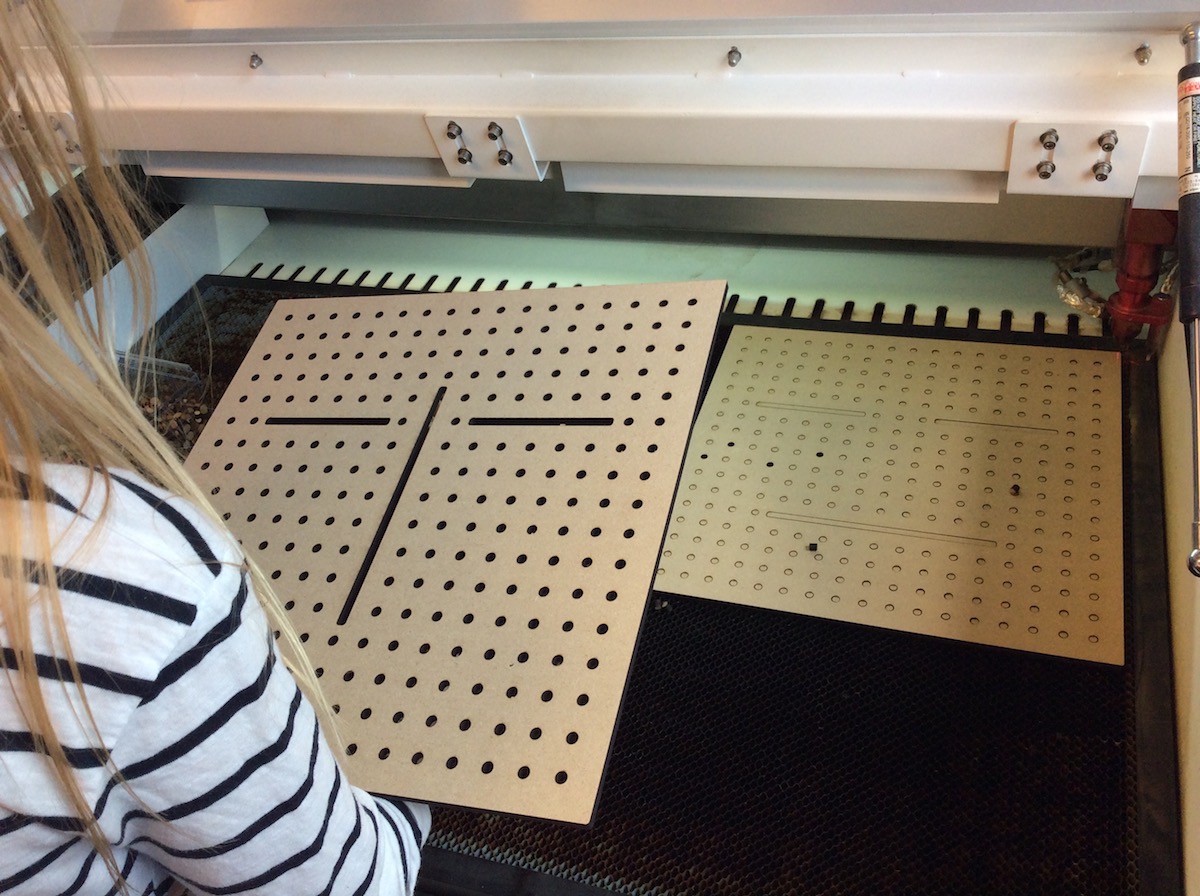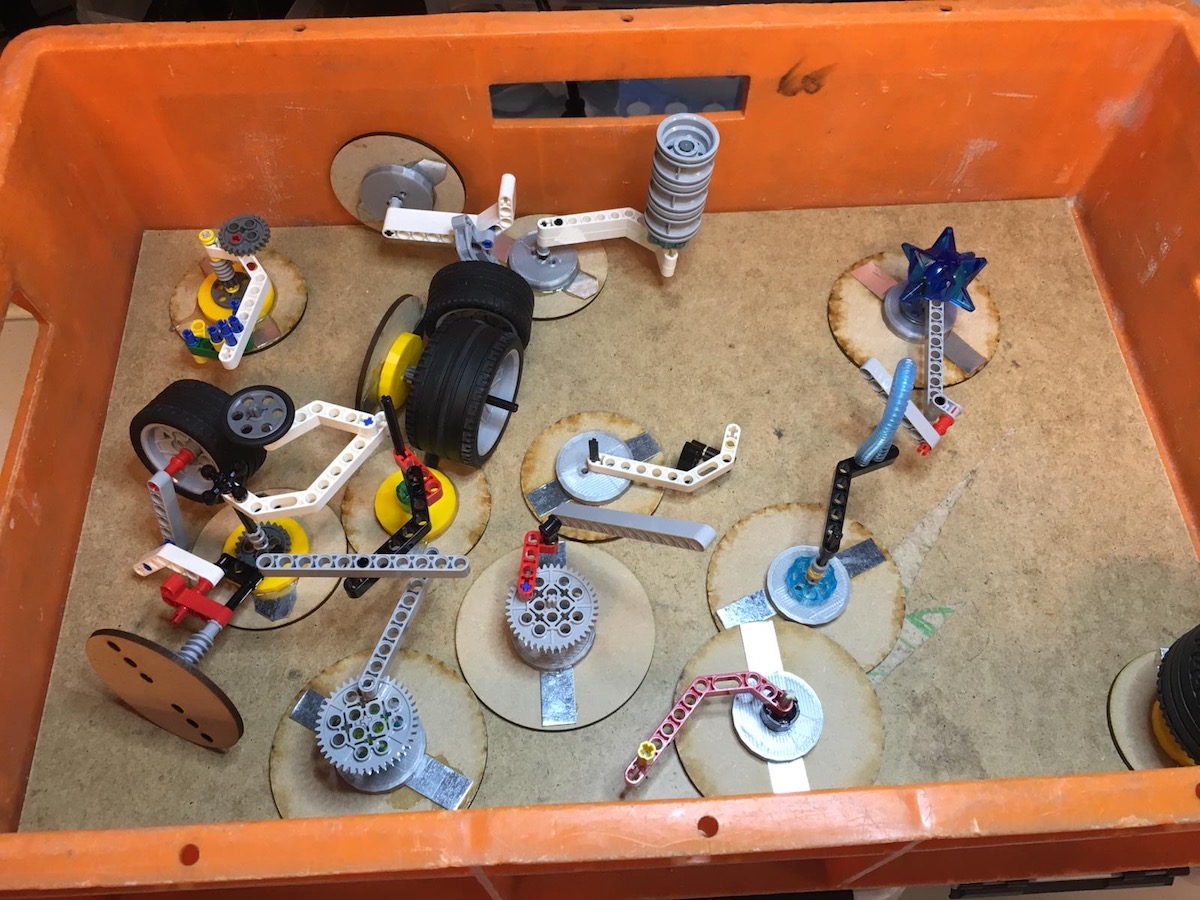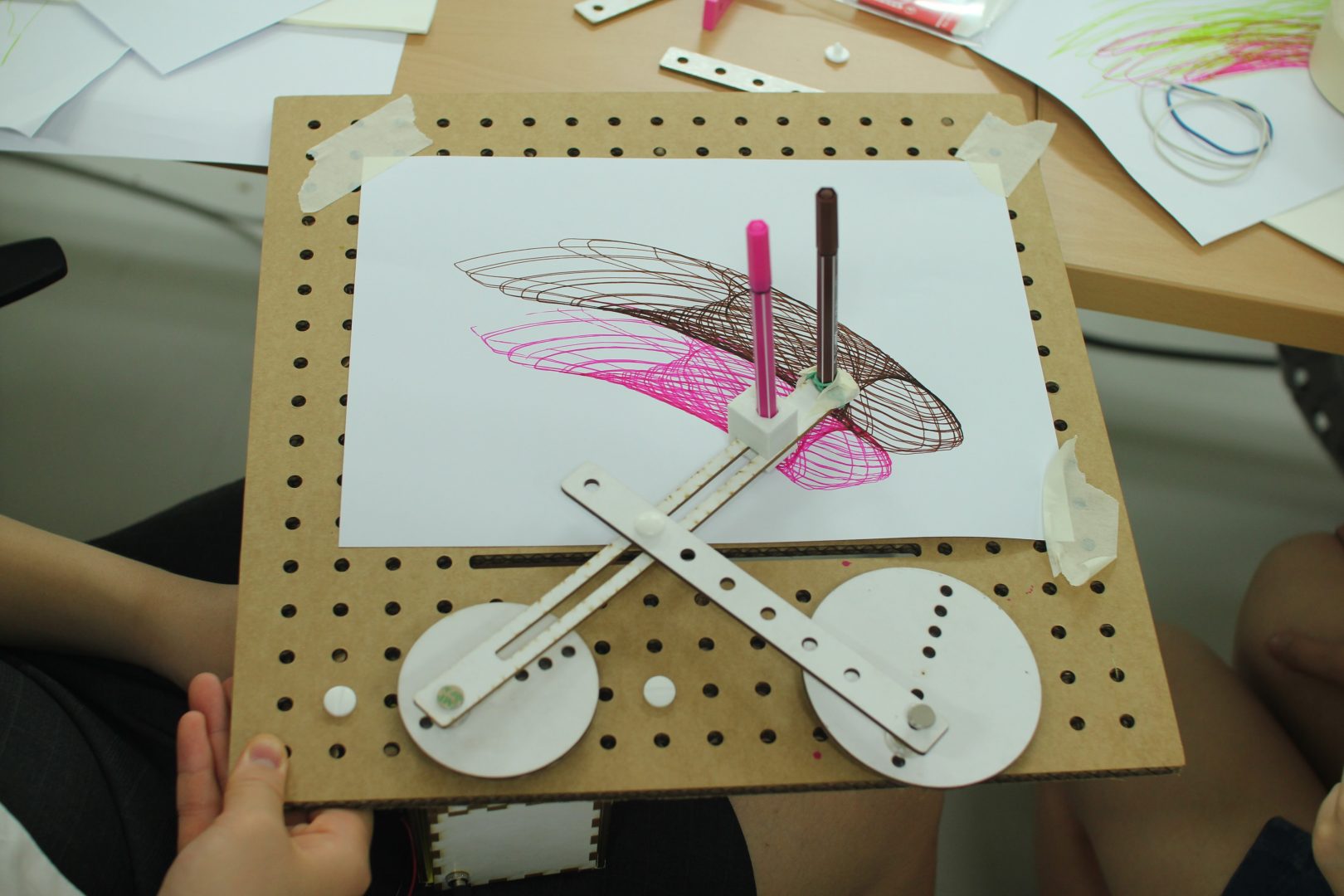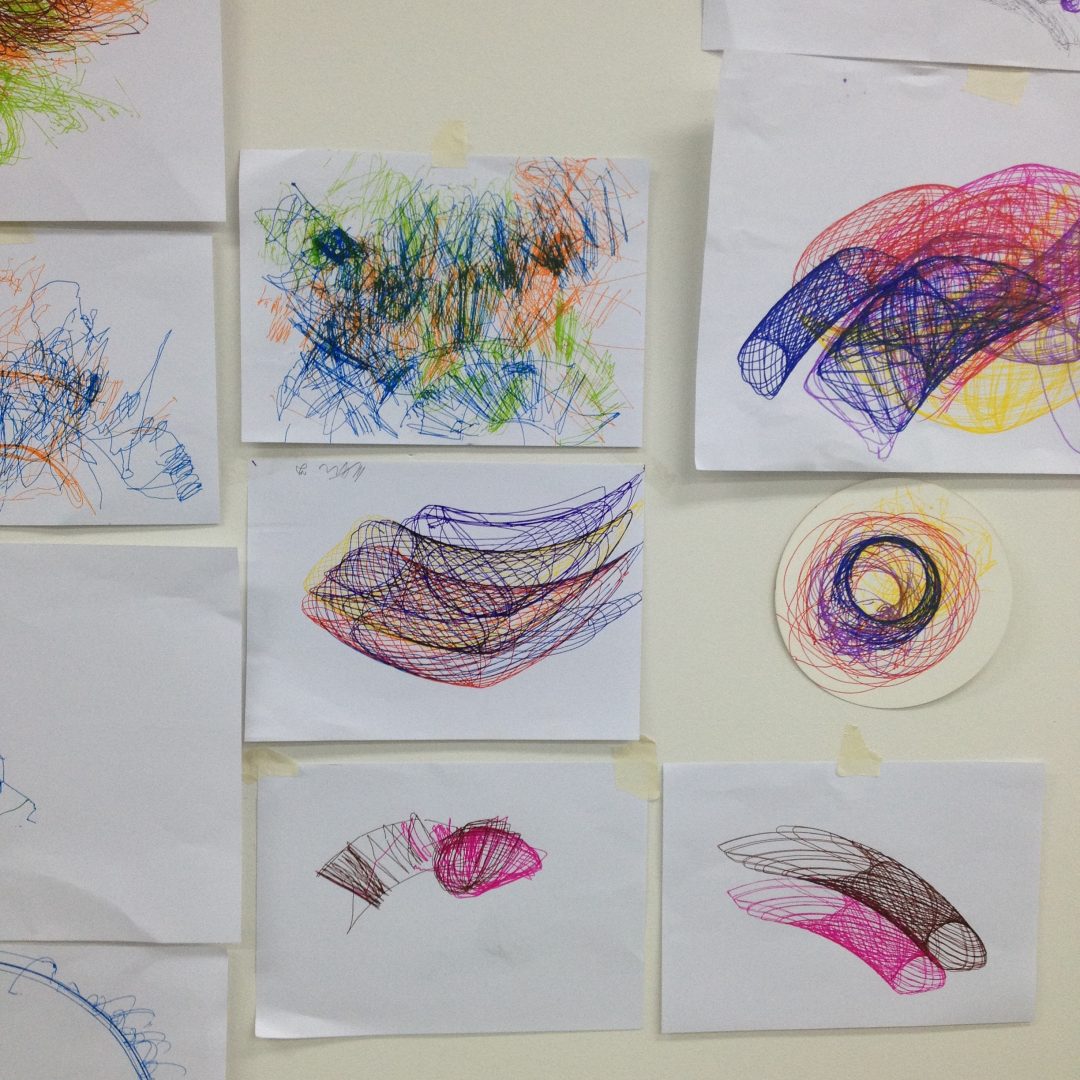Appendix: For educators
Design with movements can make a cross-disciplinary art and science course for students from 6 years up. This appendix shares cases and examples from previous LINKKI workshops held at schools, museums and libraries in Finland and abroad and suggests a few activities.
- Design with movement in educational settings
- Preparing tools
- Activity case
- Activities and related subjects
- Read/Watch
- Slides
Design with Movement in educational settings
The Design with Movement program can be used in educational settings at schools, libraries and museums. The process of building movements seamlessly combines varied topics of arts (drawing, storytelling and handcrafts) with topics of science and engineering (physics, mathematics and robotics). The program is recommended for students over 6 years old.
| Subjects related | Advantages | Methods |
Art, Design, Handcrafts, Language, Robotics, Mechatronics, Physics, Biology, Mathematics… | – Various activities available – Inclusive (less gender barrier to STEM) – Adaptable and affordable | – Project-oriented learning – Cross-disciplinary learning – Art and science combined learning – Learning by tinkering – Hands-on learning – Learning through play |
Preparing tools
From basic materials such as paper and fasteners to construction toys, whatever tools available to you can be used for this purpose. You can even fabricate LINKKI together with students when you have access to a laser cutting machine and a craft workshop space.
Activity case 1: Storytelling
In this activity, students develop an animated storyboard. A few basic mechanisms are introduced before participants begin to work on their own project. At the end of the workshop, participants share their stories with others by narrating and operating the movement. The workshop takes about 2 hours.
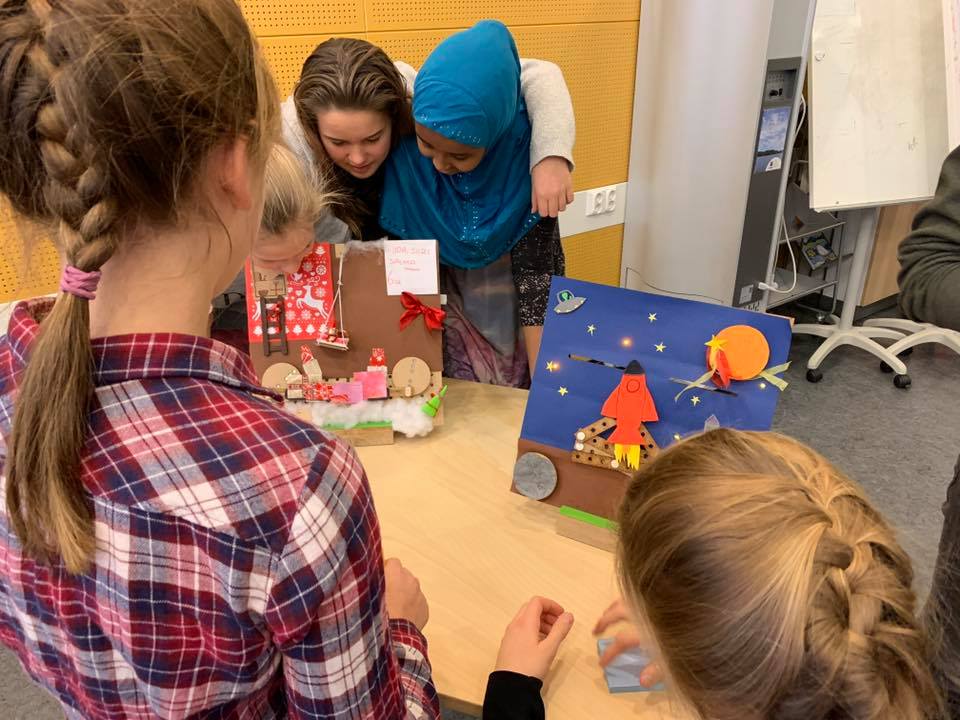
Activity case 2: Drawing
In this workshop, students develop drawing mechanisms. A few relevant mechanisms and drawing tools in architecture and mathematics are introduced before participants begin to work on their own project. Motors help them make repetitive curves for more interesting outcomes. At the end of the workshop, participants exhibit their drawings on the wall. The workshop takes about 2 hours.
Activity case 3: Typography
With bars and hinges, animated letters can be designed. The design and movement can vary depending on how connections are made and could reflect the meaning of the word. While designing the characters of different languages, students are encouraged to understand the building blocks of letters.
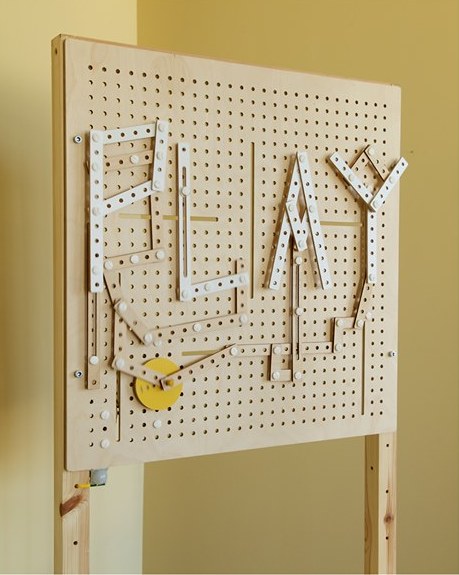
Activity case 4: Collective kinetic art wall
The workshop can be organized with the aim of making a kinetic wall collaboratively. In this case, prior exercise sessions will be needed for each participant to get familiar with the basics of building movement. This activity can encourage students to solve problems through a collaborative process.
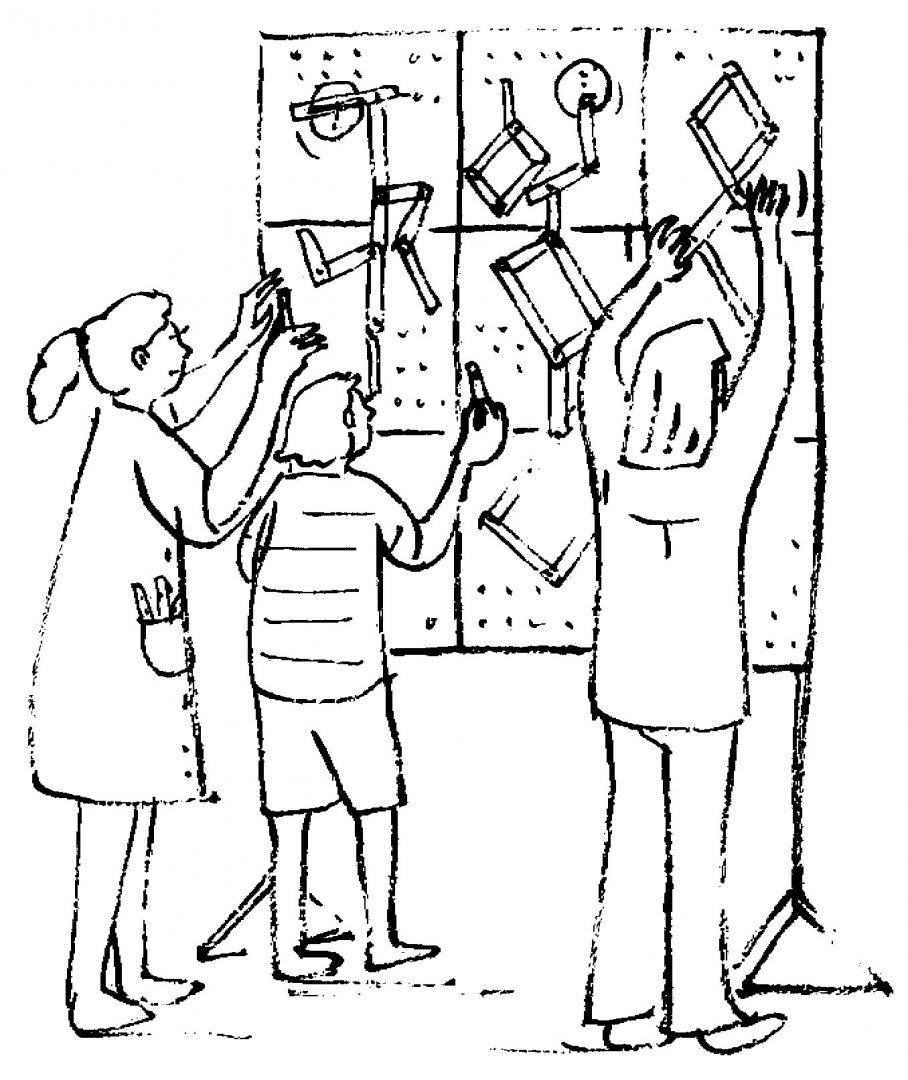
Activity case 5: Bespoke workshop
Teachers can design their workshop customized for their own purposes. For example, music is one subject that can be easily combined with kinetic movement.
Activity examples in relation to varied subjects
| Subjects | Activities |
| Mathematics, Art | Designing drawing mechanisms that leave interesting traces and draw geometric shapes |
| Biology, Mechatronics, Robotics, Literature, handcrafts | Making stories based on the knowledge of how human beings, animals, and everyday things move |
| Robotics, Coding | Designing interactive movement with sensors |
| Architecture, Mechatronics | Designing foldable structures and domes |
Read/Watch
- LINKKI resources
- Linkage activities for education
